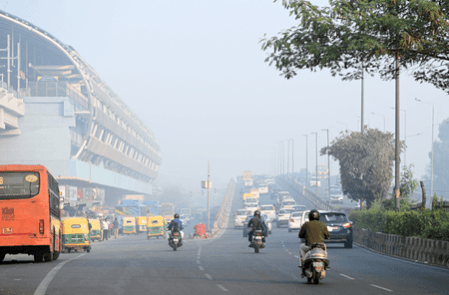
The national capital is once again grappling with hazardous air pollution as a thick blanket of smog has engulfed Delhi and its adjoining NCR cities.
According to data released by the Central Pollution Control Board (CPCB), Delhi's average Air Quality Index (AQI) stood at 372 at 7 a.m. on Monday, a level categorised as 'severe', posing serious health risks to residents.
Most parts of the city recorded AQI levels between 300 and 400, indicating extremely poor to severe air quality conditions. The situation was no better in neighbouring regions, with Faridabad at 312, Ghaziabad at 318, Greater Noida at 325, Gurugram at 328, and Noida at 310, all falling within the 'very poor' to 'severe' range.
Environmental experts warn that prolonged exposure to such polluted air can lead to respiratory illnesses, eye irritation, and worsening of chronic lung and heart conditions. Many residents reported breathing difficulties and eye and throat irritation as smog continued to blanket the city throughout the day.
Meanwhile, Delhi-NCR is also witnessing an early winter chill. The minimum temperature has dropped to 11 degrees Celsius, which is 3.3 degrees below normal, while daytime temperatures hover around 27–28 degrees Celsius. The India Meteorological Department (IMD) has forecast clear skies with cold winds blowing at speeds of 15–20 km/h, making mornings and evenings particularly chilly.

Meteorologists attribute the worsening air quality to a combination of low wind speed, falling temperatures, and rising humidity, which trap pollutants close to the surface. The ongoing stubble burning in neighbouring states is also contributing to the toxic haze.
Despite repeated efforts by authorities to curb pollution through vehicle restrictions, construction bans, and the use of anti-smog guns, the national capital continues to struggle for clean air. Health experts have advised citizens, especially children and the elderly, to avoid outdoor activities and wear N95 masks when stepping out.
As Delhi-NCR battles its annual air pollution crisis, residents are left hoping for stronger winds or rainfall to bring some respite from the suffocating smog.
(With inputs from IANS)

















